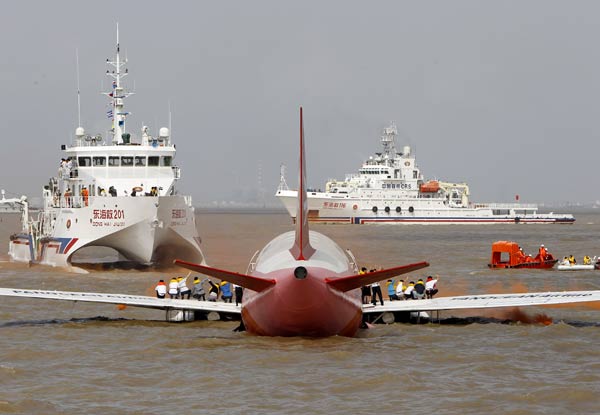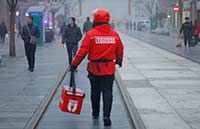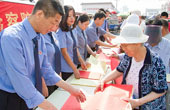Shanghai drill recreates 'Miracle on Hudson'
By Shi Yingying in Shanghai (China Daily) Updated: 2012-09-27 08:07Air and sea rescue teams helped 150 airplane "passengers" to safety on Wednesday as part of an emergency drill in Shanghai.
A full-size model was placed in the Yangtze River estuary to simulate an aircraft that had ditched into the water with two broken engines, said Huang Jianwei, director of Shanghai Maritime Safety Administration's water safety command center.
The drill, China's first search and rescue exercise involving a civil aircraft, was a simulation of United States Airways Flight 1549, which landed safely in the Hudson River in 2009 with 155 people on board, said Zhai Jiugang, deputy director of the maritime safety administration.
The plane had lost power in both engines as a result of striking a flock of birds after taking off from La Guardia Airport in New York.
The pilot of Flight 1549, Captain Chesley B. "Sully" Sullenberger, ditched the plane in the icy river, and all on board were rescued by a flotilla of converging ferries and emergency boats. The event became known as "Miracle on the Hudson", and Sullenberger became an American hero as a result of his grace under pressure.
"We're confident that if a similar accident happens in water near the airport, we're capable of making a rescue," said Huang. The Shanghai drill was successfully completed in 40 minutes, he added.
More than 20 boats and patrol vessels took part in the exercise, along with three helicopters and a maritime aircraft fitted with lifting equipment.
The rescue was a race against time, as the aircraft would sink after 45 to 60 minutes, Huang said.
Before Wednesday's drill, there were five rehearsal drills. Four of the rehearsals had failed due to strong winds capsizing the life rafts, Huang added.
"We wouldn't be able to do the rescue exercise if the wind was stronger, because the aircraft couldn't land on the water in that case," said Zhai.
Gu Yanjun, with the Donghai No 1 Air Rescue Service, who participated in Wednesday's rescue in a helicopter, said if a similar accident actually occurred, the air rescue team would arrive right after nearby fishing vessels offered their assistance "and then search and rescue boats would follow".
The group of 150 volunteer "passengers" was made up of students at Shanghai Maritime University and flight crew from Eastern Airlines. All received professional training before the drill.
Contact the writer at shiyingying@chinadaily.com.cn
- China's airlines brace for holiday passenger boom
- US begins Osprey test flights in W. Japan
- Helicopter crashes in central Texas
- 10 killed in plane crash in Russia's Far East
- At least 29 killed in bus crash in Western Nepal
- China needs over 5,000 new airplanes by 2031
- Air China flight returns Beijing over false threat
- China makes breakthrough in 'man-made sun' research
- Food delivery start-up faces fines, investigation following expose
- Pension payment and healthcare needs 'will be solved'
- Zootopia promotes illegal fox trading
- China reassures world on growth and reform
- For oil company, natural gas new 'engine of growth'
- China releases water from dam to alleviate SE Asia drought
- China to help alleviate drought along Mekong River
- Churches face severe shortage of clergy in the country
- Soybean province wants protection from GM crops








